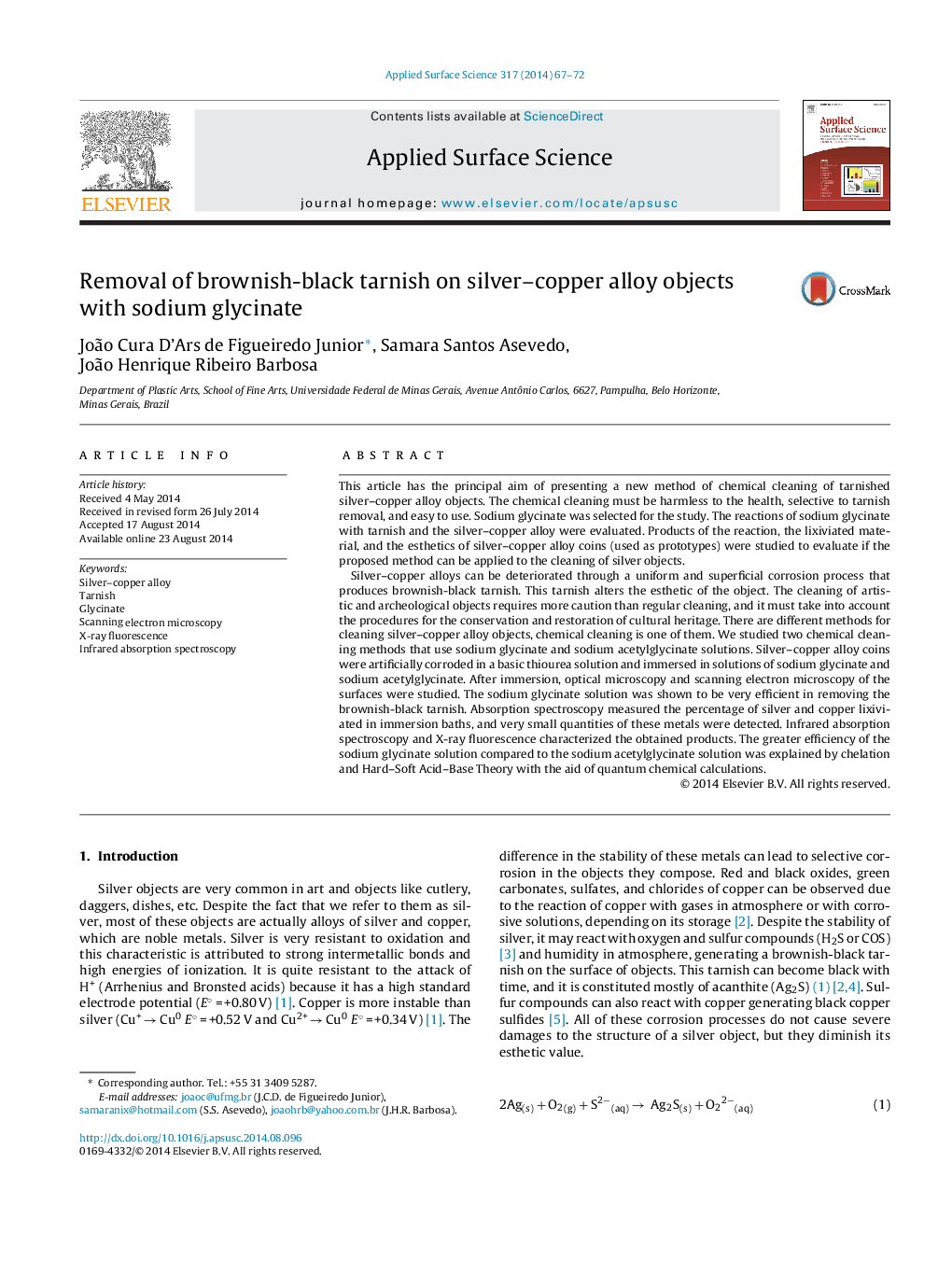| Article ID | Journal | Published Year | Pages | File Type |
|---|---|---|---|---|
| 5360958 | Applied Surface Science | 2014 | 6 Pages |
Abstract
Silver-copper alloys can be deteriorated through a uniform and superficial corrosion process that produces brownish-black tarnish. This tarnish alters the esthetic of the object. The cleaning of artistic and archeological objects requires more caution than regular cleaning, and it must take into account the procedures for the conservation and restoration of cultural heritage. There are different methods for cleaning silver-copper alloy objects, chemical cleaning is one of them. We studied two chemical cleaning methods that use sodium glycinate and sodium acetylglycinate solutions. Silver-copper alloy coins were artificially corroded in a basic thiourea solution and immersed in solutions of sodium glycinate and sodium acetylglycinate. After immersion, optical microscopy and scanning electron microscopy of the surfaces were studied. The sodium glycinate solution was shown to be very efficient in removing the brownish-black tarnish. Absorption spectroscopy measured the percentage of silver and copper lixiviated in immersion baths, and very small quantities of these metals were detected. Infrared absorption spectroscopy and X-ray fluorescence characterized the obtained products. The greater efficiency of the sodium glycinate solution compared to the sodium acetylglycinate solution was explained by chelation and Hard-Soft Acid-Base Theory with the aid of quantum chemical calculations.
Related Topics
Physical Sciences and Engineering
Chemistry
Physical and Theoretical Chemistry
Authors
João Cura D'Ars Junior, Samara Santos Asevedo, João Henrique Ribeiro Barbosa,
